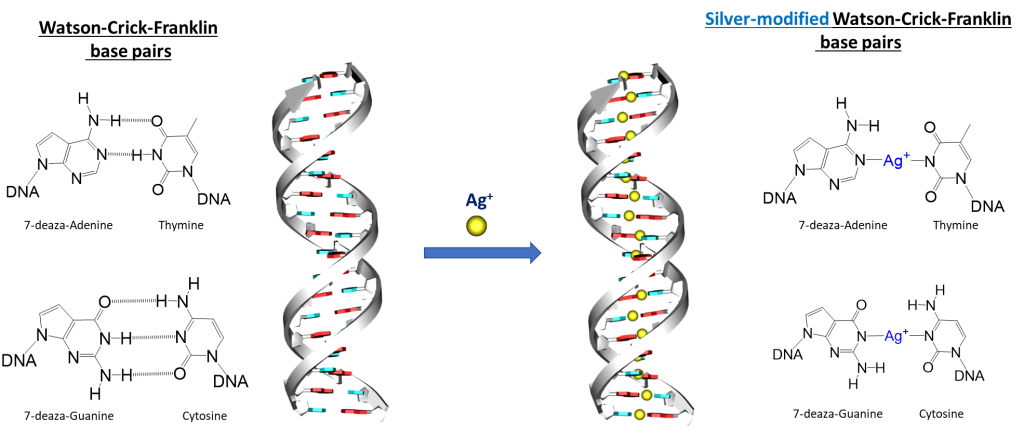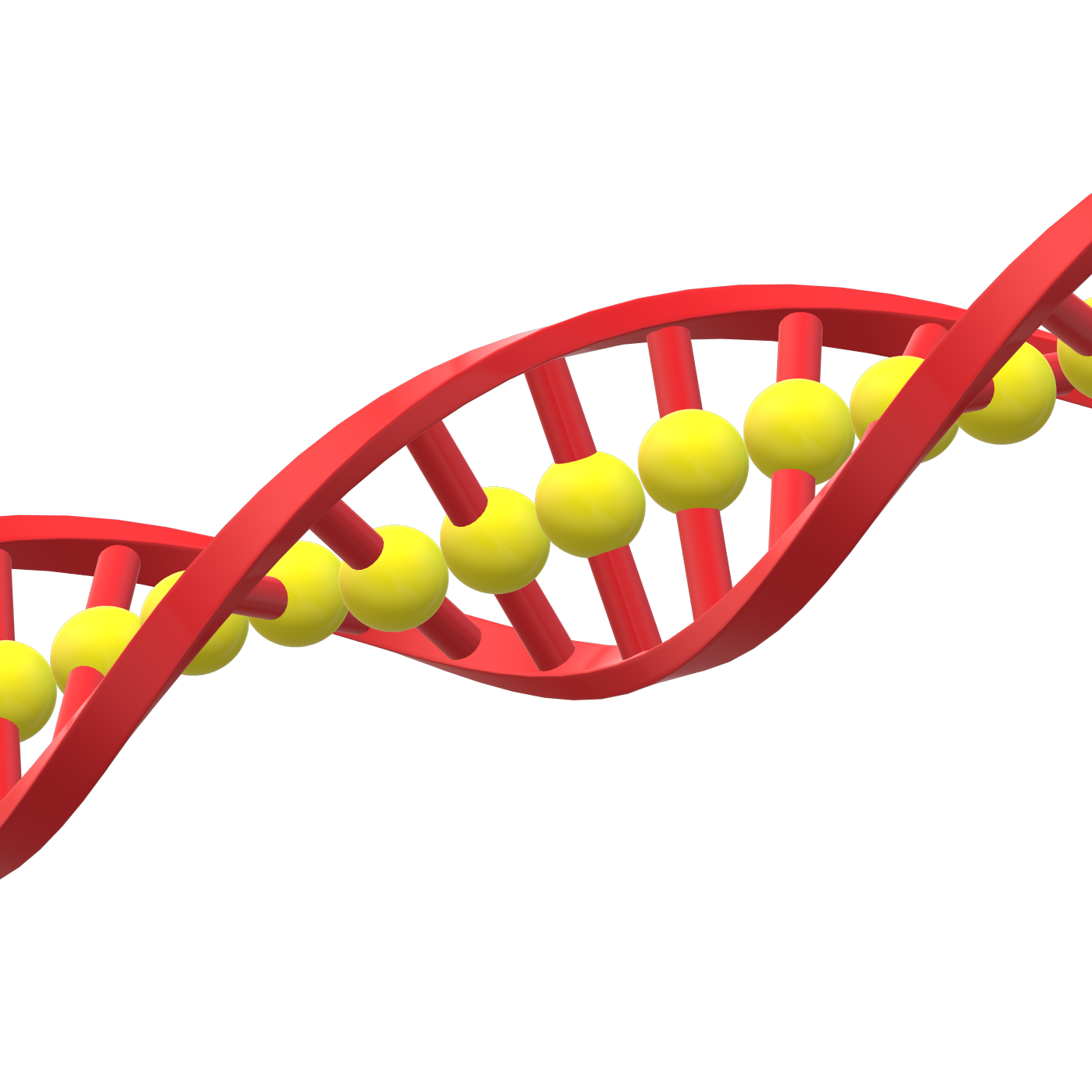Metallized double-stranded DNA molecules
We have developed a novel strategy to form metal-DNA hybrids. It is based on the use of DNA sequences in which all purine bases (adenine and guanine) are replaced by their 7-deazapurine analogues (7-deazaadenine and 7-deazaguanine). These deaza-DNA molecules retain the natural ability to self-assemble through Watson-Crick-Franklin base pairing, but surprisingly, they can also be transformed into metal-DNA by the addition of specific metal ions, while retaining their original structure. Metalation occurs at Watson-Crick-Franklin positions, in a rational and controlled manner, where metal ions replace the original hydrogen bonds and originate “metal-modified base pairs”. Thus, metal-DNA systems of different sizes and/or conformation can be obtained through the correct programming of the oligonucleotide sequence, and that contain metal ions that run along the central axis of the double-strand. As a result, metal-DNA hybrids can develop new physicochemical properties implemented by metal ions.


